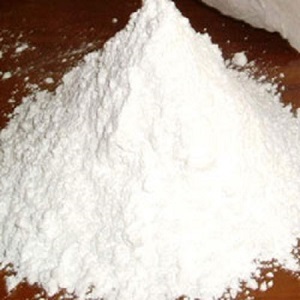India's Artistic Heritage: Soapstone Powder's Role in Creativity
Soapstone powder is a respectable and multifaceted material belonging to the domain of traditional Indian crafts and art. The powder has constituted a very vital cultural heritage in India for centuries. Allied Minerals is one notable company that has provided high quality soapstone powder that has enabled artisans, craftsmen, and artists to operate in various parts of the United States. This paper examines the main applications of Soapstone Powder in India. Traditional Indian crafts and art, and its multiple aspects reveal its lasting character.
There is however, a well-known company, Allied Minerals, located in India, which has great input in the distribution of soapstone powder. This finely divided powder is obtained from the soapstone, a metamorphic rock with its special properties. Allied Minerals has led the industry towards the availability of the best quality soapstone powder to artisans and craftsmen who then use the same to create the amazing works of art.
What is soapstone powder and how has it been used for centuries in traditional Indian crafts and art works? Now, let’s get into the nitty-gritty of this amazing material and its countless uses.
Soapstone is a soft-working and easily-workable stone. It has been used for thousands of years in India for its artistic value. In fine powder form, soapstone becomes an indispensable medium in the art of expression. Traditional Indian crafts and art can be identified into several categories of primary uses of soapstone powder.
1. Sculpture:
India also boasts some of the finest sculptures in the world, which are often made from soapstone powder. This versatile material is used by artisans to make complicated figurines, idols, and decoration pieces. Soapstone is very soft, enabling exact sculpting, and thus, preferred by sculptors. Water can be added to the powder and mixed to form a paste that is then molded into the desired shape. The paste dries to a solid and smooth finish with exquisite detailing features.
2. Inlay Work:
Inlay is a technique in which soapstone powder is used together with other materials to come up with intricate patterns and designs. These patterns are then imprinted onto a surface such as wood giving birth to elegant and aesthetic décor. This process creates contrasting colors and textures which make inlay work popular for embellishment of furniture, artifacts and architectural elements.
3. Painting and Decoration:
Traditional Indian paintings and decorations usually use soapstone powder as pigment. When mixed with water or other binding agents, it turns into a rich creamy paint suitable for painting cloth, paper, wood and wall surfaces. Soapstone powder provides a unique charm to these conventional art forms such as Madhubani, Warli paintings and other temple mural arts.
4. Pottery and Ceramics:
Soapstone powder is a useful element in making glazes and slips in pottery and ceramics. It brings unique textural and visual properties when mixed with other materials to the finished products. These traditional potters and ceramic artists make vessels, tiles and decorative items which reflect the diversity and richness of Indian culture.
5. Traditional Medicine and Rituals:
Soapstone powder is not only used in artistic and creative work. It is of great use among traditional Indian medicine and rituals since it has been used for a while now. It has been added to medicinal pastes and ointments by ayurvedic practitioners owing to its cooling and soothing effect. Furthermore, it has been involved in many rituals and religious rituals, indicating its cultural importance.
6. Carved Architectural Details:
Soapstone powder is used in India in architectural elements. Complex decoration of capitals, pillars, lintels, walls, etc. provides historical structures and temples with a unique look. Soapstone powder is soft, which makes it easier for artisans to produce intricate patterns that can survive for a very long time.
Additionally, soapstone powder has been used in different modern forms. Cosmetics are also produced from it and it is used as a filler in cosmetics like foundation and face powder. It is also a vital raw material in the production of rubber, plastics, and many industrial products.
In recent times, Allied Minerals as the leading supplier of soapstone powder in India, has played the role of protecting as well as popularizing the artistic traditions that rely on the same material. This dedication has made it possible for artisans and craftsmen to produce quality arts from India.
The long-term effect of soapstone powder in India can be traced to its adaptability and the artistic skill it affords. The delicate details of a sculpture, colorful paintings, or inlay work of soapstone powder has made an impact on the world of Indian crafts and art.
To sum up, there have been many applications for soapstone powder in India for ages that still inspire many creative ideas. Allied Minerals’ commitment to ensuring that the best soapstone powder is made available has been essential in conserving and improving the creative traditions that require this unique material. The importance of soapstone powder to Indian cultural heritage can be seen in its use as the primary material for traditional Indian crafts and art, ranging from sculpture to inlay work, painting, pottery, and many others. As we celebrate the resilience of this ubiquitous substance, we also celebrate the gifted artists who breathe life into enduring art forms that have been treasured through the centuries.
Contribute to conserving the Indian artistic heritage. Buy soapstone powder and be part of art and craft heritage.
#soapstonepowderinindia #alliedmineral



Comments
Post a Comment